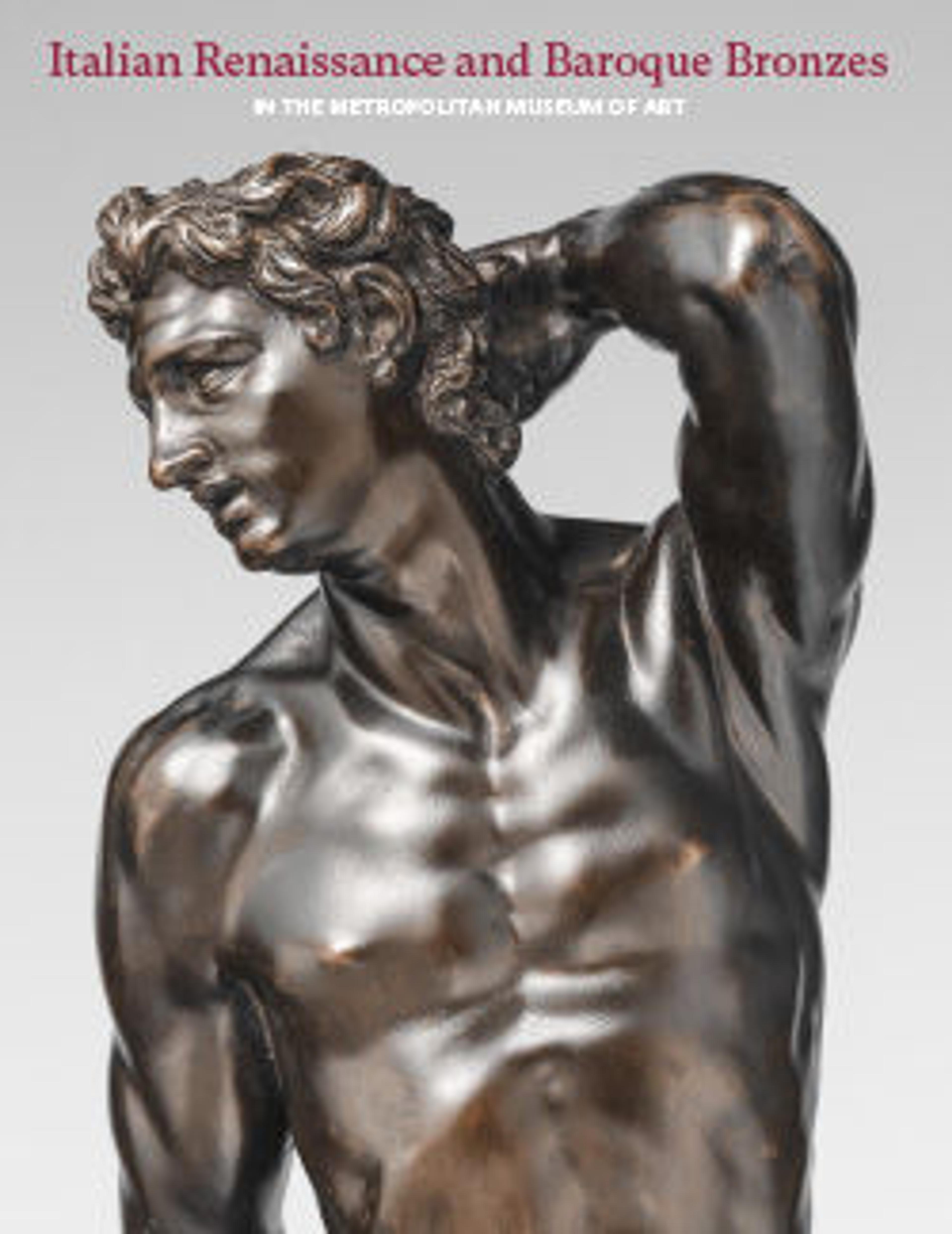Ceres
The statuette is traditionally considered a representation of the goddess Ceres, but it might also be a generic depiction of Summer, crowned with spikes of wheat and grasping a bunch of the same in her left hand, according to the description given in Cesare Ripa’s Iconologia based on Ovid’s Metamorphosis.[1] She may once have held a torch or mirror in her right hand, attributes also consistent with the allegorical type. The cast is heavy (the arms are solid), with some evident flaws, the most visible being under the neck and at the back of the right foot. The rendering of the drapery is quite coarse, though more attention was paid to the helmet of hair and intertwining leaves. Following an initial attribution to the workshop of Alessandro Vittoria, the figure has been ascribed to the manner of Girolamo Campagna.[2] There are indeed similarities between the posture of our Ceres and that of a Mercury in the Bode-Museum, also possibly after a model by Campagna.[3] The humble facture suggests that the present bronze is a serial work intended as a crowning element of an andiron produced in seventeenth-century Venice.[4]
Footnotes
(For key to shortened references see bibliography in Allen, Italian Renaissance and Baroque Bronzes in The Metropolitan Museum of Art. NY: The Metropolitan Museum of Art, 2022.)
1. Ripa 1593, p. 70 (see also Ripa 1618, pp. 499–500).
2. According to ESDA/OF, in June 1940 its attribution changed from “Probably atelier of Alessandro Vittoria” to “Probably after Girolamo Campagna” based on similarities with the bronze Apollo attributed to Campagna in the Bode-Museum (2800) and discussed in Planiscig 1921, p. 542, fig. 589 (on which see the updated entry in Krahn 2003, pp. 144–47, cat. 36).
3. Bode-Museum, 7301; see Krahn 2003, pp. 148–50, cat. 37.
4. For this type of production, see Motture 2003.
Footnotes
(For key to shortened references see bibliography in Allen, Italian Renaissance and Baroque Bronzes in The Metropolitan Museum of Art. NY: The Metropolitan Museum of Art, 2022.)
1. Ripa 1593, p. 70 (see also Ripa 1618, pp. 499–500).
2. According to ESDA/OF, in June 1940 its attribution changed from “Probably atelier of Alessandro Vittoria” to “Probably after Girolamo Campagna” based on similarities with the bronze Apollo attributed to Campagna in the Bode-Museum (2800) and discussed in Planiscig 1921, p. 542, fig. 589 (on which see the updated entry in Krahn 2003, pp. 144–47, cat. 36).
3. Bode-Museum, 7301; see Krahn 2003, pp. 148–50, cat. 37.
4. For this type of production, see Motture 2003.
Artwork Details
- Title:Ceres
- Artist:Probably after Girolamo Campagna (Italian, Verona 1549–1625 Venice)
- Date:possibly 17th century
- Culture:Italian, Venice
- Medium:Bronze
- Dimensions:Overall (confirmed): 14 1/8 × 4 3/4 × 3 1/2 in. (35.9 × 12.1 × 8.9 cm)
- Classification:Sculpture-Bronze
- Credit Line:Gift of Ogden Mills, 1924
- Object Number:24.212.7
- Curatorial Department: European Sculpture and Decorative Arts
More Artwork
Research Resources
The Met provides unparalleled resources for research and welcomes an international community of students and scholars. The Met's Open Access API is where creators and researchers can connect to the The Met collection. Open Access data and public domain images are available for unrestricted commercial and noncommercial use without permission or fee.
To request images under copyright and other restrictions, please use this Image Request form.
Feedback
We continue to research and examine historical and cultural context for objects in The Met collection. If you have comments or questions about this object record, please contact us using the form below. The Museum looks forward to receiving your comments.
